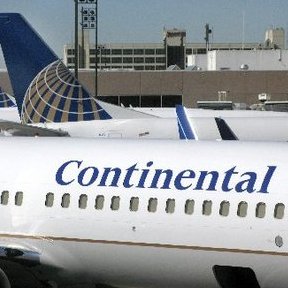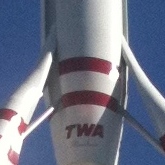ContinentalEWR wrote: RDU and BNA were actually competing with each other for traffic flows
They actually had almost no overlap, with the possible exception of offering more opportunities to get to DFW and ORD where nonstops already existed in most markets.
AVLAirlineFreq wrote:At the time they were announced in the mid-1980s, AA articulated that the two hubs would serve different roles. RDU would primarily serve north-south traffic and BNA was intended to serve traffic flowing mostly along an "X" shaped route structure.



I remember the televised press conference where American announced the BNA hub. The AA rep said BNA was the perfect location because XXX amount of domestic traffic traversed the BNA area.
Here is an excerpt from a really long article from 1993 which is really interesting and explains in detail what was going on back then...
"To understand how Robert Crandall triumphed over the airline industry—and how the airline industry might very well triumph over him—requires a little education, and Crandall is ready to provide it. Flight 509 has been aloft for an hour, he has plowed through his paperwork, and the flight attendant has refilled, again, his mug of black coffee. “Let me show you something,” he says, and with a Cheshire smile, he seizes my notebook and begins to scribble furiously: circles with little lines poking out of them (hubs and spokes), small boxes connected to bigger boxes (feeder routes), and a series of small arcs and overarching lines (short- and long-haul flights). By the time he is through, he has traversed the industry’s major ailments: soft demand for air travel, U.S. bankruptcy laws that keep ailing airlines in the air by allowing them to ignore their debts and union contracts, passenger preference for discount airlines on trips of two hours or less, crippling labor agreements, foreign incursions into the U.S. market, and worst of all, overcapacity, or as Crandall puts it, “too many planes flying too often to too many places.”
But isn’t American Airlines to blame for the overcapacity? Wasn’t it Crandall himself who led the industry on a spending spree back in the eighties, ordering hundreds of planes, opening hubs, grabbing new routes, doubling his payroll, building up the very same costly infrastructure that is now dragging him down? He pauses, a cold, inimical look flashes across his face, and the color mounts from his chin to his perfect widow’s peak. “We did not expand too much!” he thunders, slamming both hands, karate style, onto his plastic meal tray. “We did not over-ex-pand!” Chop! Chop! Chop! “That is simply”—chop!—”factually”—chop!—”wrong.” Chop!
Crandall leans across the armrest, until his face is inches away, close enough to count the pores, close enough to smell the coffee on his breath. “We vanquished those guys,” he rumbles, meaning his competitors on Chapter 11 life support. “If they were gone, we wouldn’t be shrinking.”"
https://www.texasmonthly.com/news-polit ... he-handle/




